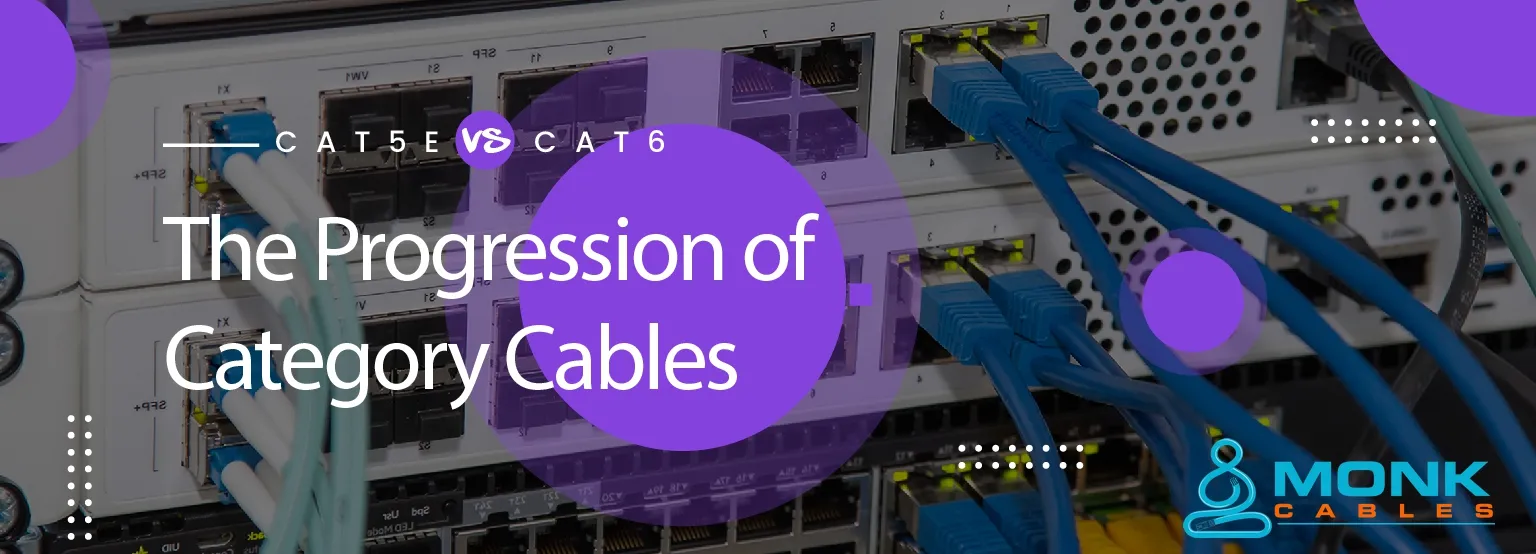
When setting up a wired network, choosing the best Ethernet cable is crucial to ensure optimal performance. Among the most popular options are Cat5e (Category 5 Enhanced) and Cat6 (Category 6); both offer reliable networking solutions, but they differ in terms of speed, bandwidth, shielding, and the quality of the material used in the cables. So, continue reading to learn how they differ and which one is best suited to your needs.
To choose the right Ethernet cable for your network, it’s important to understand the key differences between Cat5e and Cat6. Let’s explore their characteristics one by one to see how they compare in performance and suitability for different needs.
The number of users who can simultaneously access a network at its maximum speed is primarily determined by the cable’s bandwidth. One of the key differences between Cat5e and Cat6 is their bandwidth capacity. Whereas the Cat5e cable operates at 350 MHz, the Cat6 cable can handle frequencies as high as 550 MHz.
If you need higher bandwidth, Cat6 is a better choice. However, Cat5e is sufficient for standard gigabit networking needs.
Both Cat5e and Cat6 can handle speeds up to 1000 Mbps or 1 gigabit per second over 100 meters. But Cat6 can handle 10 Gbps over shorter distances up to 55 meters. The performance of the Cat6 cable is up to 550 MHz, which is more than that of the Cat5e cable.
This means Cat6 cable has a higher data transfer rate than Cat5e. As a result, Cat6 cables can power 10GBASE-T or Gigabit Ethernet, whereas Cat5e cables can only handle a maximum of 1GBASE-T or 1GE.
The materials used in the cable affect their performance and durability. Cat5e is made with 100% solid copper conductors, ensuring superior conductivity, minimal signal loss and better durability. On the other hand, Cat6 is often available in copper-clad aluminum (CCA), which is more affordable but may not offer the same conductivity as solid copper.
Cat5e with pure copper conductors is more reliable for long-term durability, while Cat6 offers improved performance but may require solid copper for the best performance.
Electromagnetic interference (EMI) can affect network performance, and shielding helps reduce crosstalk. Cat5e cables are available in different shielding or insulation, which minimizes signal interference, such as
Cat6 is better suited for high-interference environments due to its superior shielding and reduced noise levels.
Both cables can be plenum-rated (CMP) for installation in HVAC spaces, like walls and ceilings, while maintaining the safety standards. Cat 5e plenum features plenum-rated jackets, making it suitable for the safe insulation in commercial and residential buildings.
Cat6 plenum uses HDPE ( High-Density Polyethylene) jackets, offering flame resistance and low-smoke emissions. Both cables meet the fire safety requirements, but the choice depends on the specific project requirements.
Power over Ethernet (PoE) eliminates the need for additional power sources by allowing network cables to carry power in addition to data. Cat5e supports PoE, PoE+, and PoE++, making it compatible with powered devices like VoIP phones, security cameras, and access points.
Cat6 also supports PoE applications, with the added benefit of better heat dissipation due to its thicker conductors. Both cables work well for PoE applications, but Cat6 may be a better option for power-hungry devices due to its lower resistance.
In comparison with the properties and other specifications, cost also matters a lot to decide which is the most cost-effective. Cat6 cable costs more than Cat5e cable because it performs better and has higher-quality insulation. Generally, the difference ranges from 10 to 30 percent.
Choosing the most compatible and reliable Ethernet cables primarily depends on the requirements of your business or project.
Choose Cat5e if
Both Cat5e and Cat6 offer reliable networking solutions, but Cat6 is the superior choice for high-performance applications. If you’re building a future-proof home network, gaming setup, or business environment, Cat6 provides better speed, bandwidth, and reduced interference. However, if budget and basic gigabit networking are your priorities, Cat5e remains a cost-effective and dependable option.